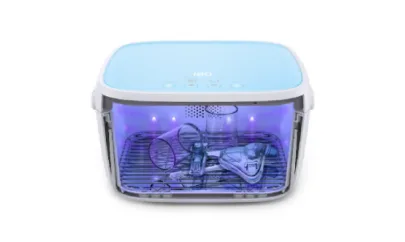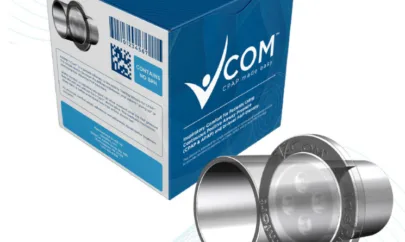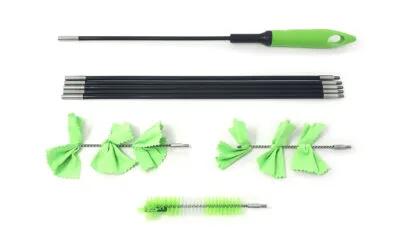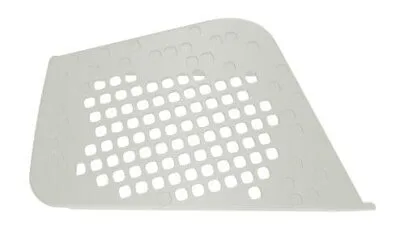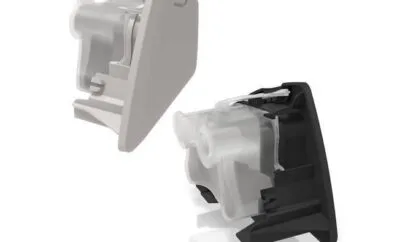
A Deep Dive into CPAP Tube Types and Their Differences
Positive airway pressure (PAP) therapy helps keep the airways clear, improving sleep quality and reducing the risk from serious health issues linked to sleep apnea.
The PAP device tube connects to the mask worn while you sleep. The tube delivers pressurized air that helps keep your airways open. It is an important part of the equipment used to treat obstructive sleep apnea. In this article, we shall look at the different types of tubing and their benefits.
What Are the Different PAP Machine Tube Types?
Tubing can come in different sizes that allow you to select the tube to suit your requirements. However, most standard tubes share a 22 mm connector diameter that allows them to connect to most devices and masks.
As with the devices and masks, it is important to consult with your healthcare provider or supplier to ensure you have the tubing best suited for you.
Considerations such as air pressure settings and how far and where the device is positioned in relation to your bed are factors that can determine which type of tubing is best for you.
The following are three main PAP machine tube types.
1. Standard Tubing
As the name hints, this is a more universal tubing style, one which is likely to connect to a variety of devices and masks. Standard tubing tends to be the less expensive option.
The standard length of the tube is 6 ft with a diameter of 22 mm. However, you can find variations from 4 ft up to 10 ft in length. The choice of length will depend on the proximity of the machine to your bed, but 6 ft remains the standard length.
Two examples of standard tubing are:
- Performance PAP Tubing – Standard 6 ft length tubing with additional flexibility and 20% lighter than classic standard tubing. Made by Philips Respironics, it is suited for use with smaller, lighter masks.
- Smooth Bore Tubing – Tubing that can be used with a variety of devices and offers 6 ft, 8 ft, and 10 ft length options.
2. Slim Tubing
With this option you can still have tubing that is 6 ft in length, but a diameter of just 15 mm. Slimmer tubing can appeal to people who move a fair amount during the night, as there is less drag on the mask. It will not feel so bulky and less restrictive when you do move. This type of tubing can also be a good option when traveling as it will take up less space.
Slimline tubing for the ResMed AirStart 10, AirSense 10, AirCurve 10, and S9 PAP devices is one such example. As well as being 14% slimmer than traditional standard tubing and taking up 35% less space in your travel bag, this tubing item is also 40% lighter.
3. Heated Tubing
A dry mouth or sore throat in the morning can be an issue using PAP, one which can threaten continued compliance. Dry air can also worsen allergy and cold symptoms. A heated humidifier is often used with the device to moisten and warm the pressurized air to help prevent this.
Heated tubing is used to ensure the warm temperature of the air is maintained from the point it leaves the humidifier until it reaches the mask. This can make the treatment more comfortable. The ambient temperature of your bedroom can otherwise reduce the temperature of the air as it travels along the tube. This can also introduce condensation into the tubing that may drip into your mask.
Heated tubing products tend to connect to specific machines and can weigh more than standard tubing.
- ClimateLine tubing is designed with comfort in mind. A built-in sensor measures and adjusts the temperature to help maintain a consistent and comfortable temperature. The tubing is 6 ft 6” in length and a slim 15 mm in diameter. The tubing is designed to fit with the S9 series of devices fitted with an H5i humidifier.
- ClimateLineAir tubing is designed for the ResMed AirSense 10 and AirCurve 10 machines. The heated tubing uses a built-in sensor that allows you to set a tubing temperature between 60 and 86 degrees Fahrenheit. The slim tubing diameter allows for greater flexibility as you sleep.
Oxy Heated Tubing
If you require additional oxygen through oxygen therapy alongside CPAP, oxy heated tubing may be the answer.
The ClimateLineAir oxy heated tubing is a variation that has a supplemental oxygen connector for those on oxygen therapy. Therefore, as well as delivering the additional oxygen required, the tubing also maintains a consistent temperature to the warm, moistened air delivered from the PAP machine.
Tubing Accessories to Consider
Sleeping with a mask and tubing connected to a machine can take a period of adjustment. Accessories that may help with this adjustment are worth considering. These include:
- Tubing Lift – the lightweight lift positions the tubing up and away from you as you sleep. The reversible double bend mast allows you to adjust the height and reach of the tubing to the position that works best for you.
- Snuggle hose – cover the cold medical-looking tubing with this stylish fleece sleeve. This accessory can also keep the air warm within the tubing and prevent condensation.
- 2 in 1 Premium hose brush – it is important to keep your tubing clean and free from condensation. The soft nylon brushes will clean standard and slim tubing types.
- ZephAir Standard Hose Connector – this handy accessory lets you connect your standard non-heated tubing to a ResMed AirMini travel device.
Having the right PAP machine tube encourages compliance with your sleep apnea treatment. Whether standard, slim or heated tubing, your CPAP supplier can recommend the appropriate tubing and accessories.
Source:
https://shop.sleepquest.com/search?type=product%2Carticle%2Cpage&q=hoses+and+tubes%5C





